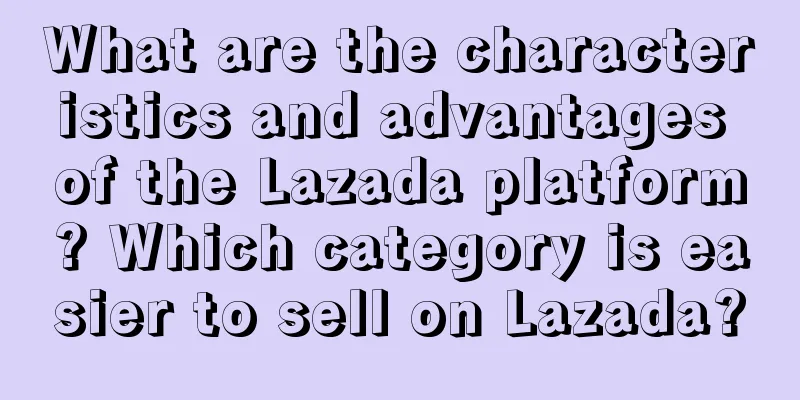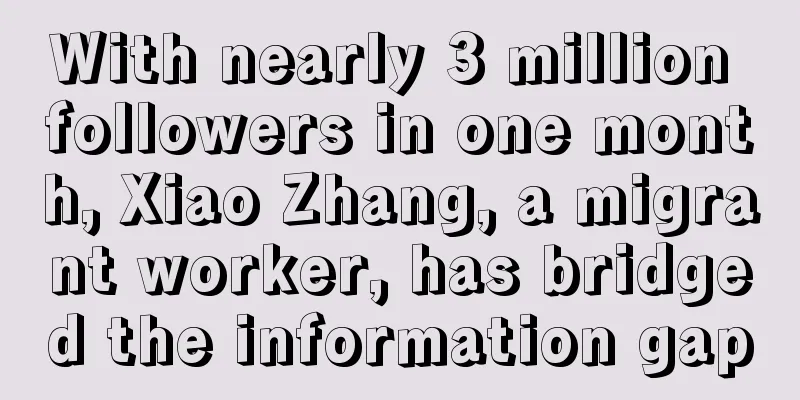Will advertisers’ marketing budgets continue to decline in 2024?

In the past two years, the global advertising market has been in a slump. After fierce competition for traffic, advertisers seem to have switched from "actively rolling" to "passively lying" mode. At the beginning of this year, the gloomy atmosphere has not ended. Internet platforms and marketing service providers have asked: Will advertisers’ market budgets really continue to decline in 2024? After interviewing several brand owners, we got a relatively optimistic answer - if brands want to survive and grow, they still rely heavily on advertising. At the same time, we also heard some relatively concentrated opinions from brand owners. In summary: First, in the middle ground between "brand advertising" and "performance advertising", "content advertising" has been raised to a very high strategic level; Second, the “platform island” problem is a common pain point for all advertisers; Third, in comparison, emerging brands rely more on "performance advertising". 1. Advertisers’ marketing budgets will not disappear, they will only shiftIn 2023, the "2023 China Advertiser Marketing Trend Survey Report" (hereinafter referred to as the "Report") released by CCTV Market Research (CTR) pointed out that "the annual marketing budget changes are relatively stable, and advertisers are cautious in spending." Among them, only 31% of advertisers said they would increase their marketing and promotion budgets, 39% of advertisers' marketing budgets would remain the same as in 2022, and 30% of advertisers would reduce their budgets. Overall, "the net increase continues to narrow." Although the growth of China's advertising market is very weak, advertisers have felt that it is not easy to do business in the past two years. However, after visiting some brand owners and marketing service providers, we found that under the seemingly negative appearance of the advertising market, there are actually undercurrents - advertisers' budgets have not seriously declined or disappeared, but have just shifted. Generally speaking, brand owners will divide their advertising budgets into two parts: "brand advertising" and "performance advertising". The former is responsible for brand voice, and the latter is responsible for product sales. When we divide brands into domestic emerging brands, domestic mature brands, and international brands, we will find that: The first type is domestic emerging brands, including "Dou brands" and other new brands that rely on major traffic platforms. They have strong e-commerce operation capabilities and often focus on a certain platform to run performance ads. "Dou brands basically put brand ads and performance ads at a ratio of 1:9, or even 0.5:9.5." An industry insider told Morketing. Nowadays, in the catalytic environment where consumers are becoming more and more fragmented, it is almost impossible to build brand influence and then drive sales by putting brand ads. In addition, new brands are under greater sales pressure and hope to see returns in the short term. Therefore, "putting a large number of performance ads - driving sales - doing brand ads - forming a brand" has become a more suitable advertising model for new brands at this stage. The second type is international brands, which spend a relatively balanced proportion of their budget on these two types of advertising. A global FMCG giant told Morketing that the ratio of brand advertising to performance advertising is about 4:6. This is because the strategy of international brands in the Chinese market tends to be long-term brand building. Compared with companies that are under great pressure for short-term performance, brand advertising is more suitable for international brands. Of course, although sales are not the core purpose of this type of advertising, advertisers still hope to gain certain sales opportunities when placing brand advertisements. The FMCG giant also said, "When we place brand advertisements, we will also ask for some resources that may promote conversions. If there is one more sales opportunity, why not do it?" The third type is domestic mature brands, which are somewhere in between. In the past, they mainly invested in brand advertising, but now they are also transferring part of their budget to performance advertising on traffic platforms, taking into account direct conversion effects. For the latter two types of mature brands, there may be a trade-off between the proportion of advertising budget for star products and new products. For example, if the old products already have relatively high user stickiness, then the advertising budget should be focused on new products to build user awareness, and then the brand's entire product matrix can be boosted by bringing new products to old ones. So overall, whether it is new or mature, domestic or foreign, as performance-based advertising products become more and more mature, brand owners' advertising methods have changed to a certain extent. The proportion of advertisers' "performance advertising" budget is still increasing, especially for new and cutting-edge brands. One point that cannot be ignored is that "platform silos" are still a pain point that brands have mentioned unanimously. The data between major traffic platforms cannot be connected, resulting in low brand marketing efficiency and reduced consumer experience, which forces brands to bear greater costs and even duplicate work. Of course, this also forces brands to strengthen their private domain construction and operation capabilities, so as to better capture users and communicate directly with them. 2. "Content advertising" takes more budgetThe shift in advertiser budgets is essentially due to the continuous development of the digital advertising industry, which has given rise to more diverse advertising functions and product forms. The most direct industry consensus is that we have long entered the era of "brand-effect advertising", and advertising products that are in the middle ground between brand and effect are becoming more and more popular. This type of advertising often has heavier content, stronger social attributes, is more in line with the Internet environment, is easy to spread, and can directly promote purchases. Specifically, short videos shot by celebrities and KOLs, communication events and topic marketing triggered by brand voices on social media platforms, etc., are all forms of advertising that can drive sales better than traditional brand advertising and deliver brand content better than performance advertising. This part of marketing promotion has taken away a large amount of budget from brand owners. CTR's "Report" also mentioned that "the penetration rate of content marketing has reached 99%." "In recent years, content marketing has been elevated to the level of content strategy, and you will see more and more brands considering 'brand-effect content marketing'. Good 'brand-effect content marketing' may immediately set off a live broadcast room," an industry insider told Morketing. The platform also holds a similar view. At the end of last year, Xiaohongshu CMO Zhiheng proposed that "grass planting has become the third marketing paradigm." This also indirectly confirms that "content advertising" may further divide advertisers' budgets and push the industry into a new advertising era. In addition, in the turbulent advertising market, which platforms or advertising products are more popular with brands? In general, the market strategies of different types of brands are showing an increasingly differentiated trend. In the past few years, emerging brands that started out with “roll” performance advertising on TikTok may increase their TikTok platform budget in the future to earn more market share in the refined track. Some industry insiders also suggested that “Pinduoduo is a neglected platform” and that it could try to make customized products, that is, to differentiate its products from other sales channels and seize a part of the market with relatively low-priced products without affecting the overall brand. ConclusionIn the future, brands may have more precise and diversified advertising needs. As for "content advertising", brand owners still have a huge demand for content creative production. On the one hand, advertisers may allocate more budget to AI advertising, after all, this is closely related to the brand's content advertising capabilities. And now AIGC's creative ability in content marketing is obvious to all. Even AI may promote further recovery of the entire advertising market. On the other hand, outside the isolated island, brand owners are either forced to wait or take the initiative. Private domain construction will still be a focus in the future and may divide more brand owners' budgets. Author: Claire; WeChat public account: Morketing |
<<: WeChat's "Shake" app is offline: Zhang Xiaolong's masterpiece disappears without a trace
>>: Tianshui Malatang was copied by me using Taobao and turned into a dark dish
Recommend
The market offers free cooking services! A number of restaurants are completely panicked...
Recently, the vegetable market has evolved and lau...
The 5.5 million-fan Internet celebrity played the victim to gain traffic but failed! In addition to playing the victim, what else can content creation do?
Introduction: The article introduces the theme of ...
Has the core competitiveness of live streaming e-commerce shifted from “price” to “personality”?
As consumer shopping habits evolve, livestreaming ...
Nezha Automobile IP development ideas: Good vision is not a "hammer" and does not need to be "super"
It is undeniable that the visual design in the wor...
How to apply for a refund on a Shopee order? Related questions answered
Shopee is a cross-border e-commerce platform with ...
The entire process of formulating Xiaohongshu’s advertising strategy, 5,000 words of practical information!
This article deeply reveals the entire process of ...
Which payment method is better for Shopify? Introduction to payment methods
Shopify supports many payment methods. Before choo...
Looking at the brand’s spring marketing, I discovered these marketing logics!
The once-a-year spring marketing period is here, a...
With Sora's brutal intrusion, how can advertising professionals survive?
OpenAI released the Vincent video model Sora. What...
Getting Marketing Done: User Interaction Bus
A good activity not only needs to have attractive ...
"New Chinese Products" Overseas Gold Rush: Each Shows Its Skills
New consumption has been going global, and success...
Changing marketing scenarios, unchanged communication models (Part 1)
The author of this article uses several simple cas...
7 videos, 230,000 followers, already a hit!
This article starts with the account "Chi Zao...
Play with the advertising copy
Advertising copy is the bridge of communication be...
How to provide after-sales service for items purchased from Amazon? What after-sales service is available?
Today I will introduce you to some content about A...









